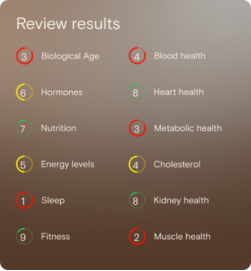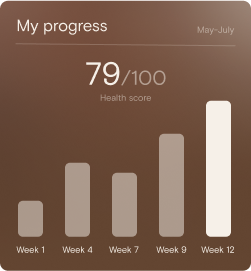What is ALT?
ALT is an enzyme (alanine aminotransferase) primarily produced in the liver, with smaller amounts in muscle and other tissues. It participates in amino acid and energy metabolism, helping shift nitrogen groups between alanine and pyruvate.
Why does it matter for long-term health and wellbeing?
Because the liver is a metabolic hub—handling fat metabolism, detoxification, nutrient processing and energy supply—ALT acts as a sentinel marker. When ALT rises, even moderately, it can reflect that the liver is under stress. Over time, chronic stress in this system is counterproductive to metabolic efficiency, resilience, and longevity.
What’s an optimal level of ALT?
- Optimal target for wellbeing: < 35 U/L in females; < 40 U/L in males
- Typical Australian lab reference interval: approximately 5 to 40 U/L for adults (male) and 5 to 35 U/L (female)
What influences ALT levels?
Several modifiable and non-modifiable factors play a role, including:
- Excessive intake of substances processed by the liver (e.g. alcohol, over-the-counter drugs)
- Dietary excesses (especially saturated fat or sugar)
- Inadequate sleep, circadian disruption
- Sedentary behaviour or poor physical activity
- Obesity, especially central adiposity
- Insulin resistance and metabolic stress
- Certain medications or supplements
- Genetic variability and individual differences in liver resilience
What does it mean if ALT is outside the optimal range?
If ALT is trending upward above the optimal target (even if still within the lab’s “normal” range), it hints at early liver stress or inefficiency. Persistent elevation beyond the lab upper limit suggests a stronger signal that metabolic or detox capacity may be challenged. In that case, it’s a prompt to review cumulative lifestyle, dietary load or exposures and adapt accordingly.
How can I support healthy ALT levels?
To help maintain or lower ALT towards optimal:
- Focus on weight stability or modest fat loss, especially reducing central fat
- Prioritise a nutrient-rich, lower sugar / refined carbohydrate diet
- Avoid or minimise exposures that burden the liver (excess alcohol, unnecessary medications, toxins)
- Maintain consistent physical activity, including both aerobic and resistance work
- Prioritise restorative sleep and support circadian alignment
- Hydration and liver-supporting foods (e.g. cruciferous vegetables, antioxidants)
- Monitor and adjust over time: use serial ALT testing to see response
This information is provided for general health and wellness purposes only and does not replace medical advice.
References
- Royal College of Pathologists of Australasia. Alanine aminotransferase reference intervals.
- Pathology Tests Explained. Alanine Aminotransferase (ALT) patient information.
- Farrell, A. M. et al. Estimates of metabolic-associated fatty liver disease in Australia: ALT elevation in AusDiab cohort.
- Coates, P. (2011). Liver function tests. Australian Family Physician.




















.png)
